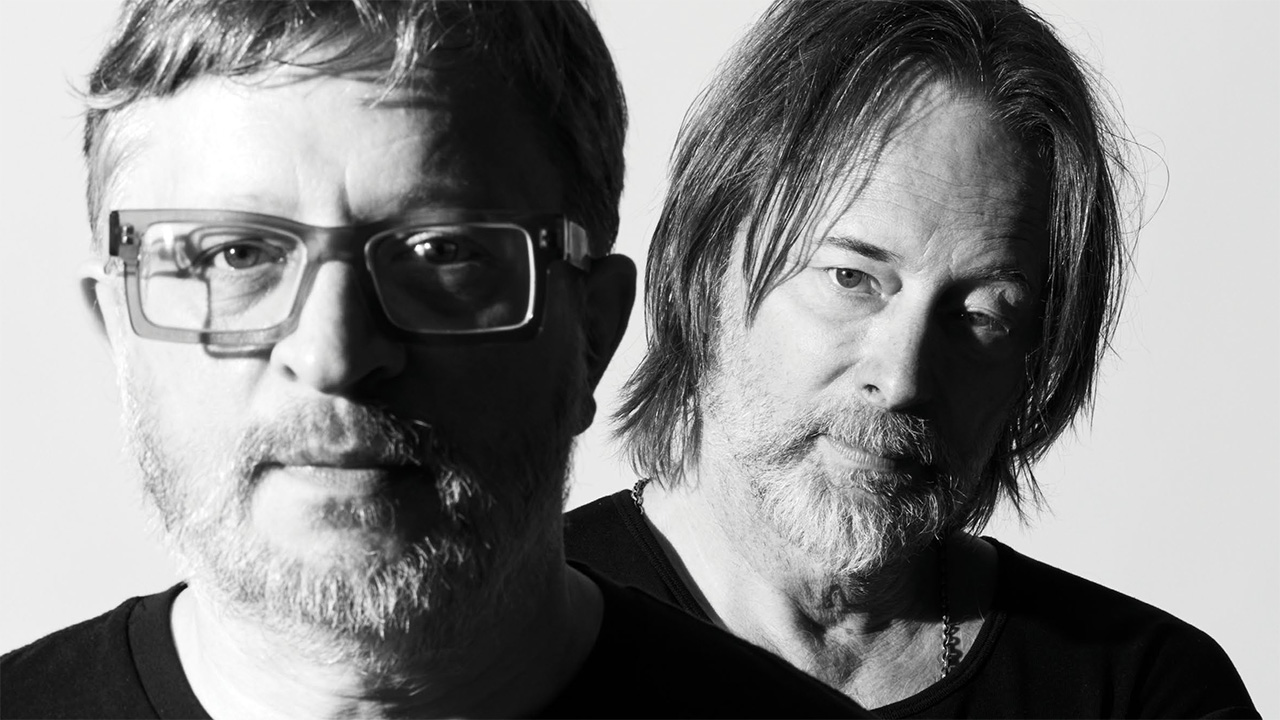“I feel like I’ve woken up from a coma”: how With Teeth brought Trent Reznor back from the brink and revitalised Nine Inch Nails’ career
The record that got the industrial-rock titans back on track turns 20 in May. Here's the story of its creation.

In May 2005, it had been well over half a decade since the last Nine Inch Nails’ record and there was a very real possibility that Trent Reznor might not have ever been able to recapture what had made his band one of the most exhilarating and ferocious rock bands of the 90s. After all, Nine Inch Nails’ previous album had suggested the band’s leader was diving off the deep end. Now regarded as a sprawling masterpiece, 1999’s The Fragile was also scattershot and unwieldy, a thrilling listen that was pretty much the sound of someone heading into the wilderness and not bothering to bring a map.
“It’s an accurate snapshot of my life at that time,” Reznor said of The Fragile in an interview with Metal Hammer in 2005. “I made the best record I could, with the tools available and, I was terrified, I was overcompensating. I’m proud of it. It was made in insane circumstances… I hope I never make a record like that again… I was the guy on the ledge, ready to jump. I had to get to a true bottom.”
It was an album made by a man mired in addiction and cutting himself adrift, an idea only hardened by the fact he’d now gone AWOL for a few years. It was certainly hard to imagine that Reznor’s next move would not only be getting back on track but also making some of the poppiest-sounding music of Nine Inch Nails’ career. Yet that’s exactly what happened with their 2005 fourth album With Teeth, a galvanising clean slate of a record and one that revitalised Reznor as an artistic force. This is where the Reznor we know in 2025, the fella who, alongside his co-conspirator Atticus Ross, pumps out about five phenomenal soundtracks a year, sprung from. In between The Fragile and With Teeth, Reznor got clean and has never looked back. He’s been on a jaw-dropping creative streak ever since. It was a markedly transformative time in the Cleveland native’s life.
“There’s been a radical change,” Reznor told Clickmusic at the time. “I’ve gone from addiction to sobriety. My odds of survival have gone up – that’s a profound change. I’ve changed my management, I get on better with the label, I know where my money is – which is a change. I’m healthier in body and mind. My writing is clearer as well... I feel like I’ve woken up from a coma… and I’m just thankful that I still have stuff to say.”
Similarly, Reznor arrived at the making of With Teeth with a fresh start in mind. After the dense, electronic-heavy dynamics of his first three records, here he wanted something more performance-orientated. “I’m still adhering to the collision of icy precision and human error,” he said. “I started writing the new album outside the studio, with just lyrics and a piano, so that the songs wouldn’t get too far down the production road before I had finished writing them… if there was a bass-line or riff, we didn’t just loop two bars over and over, we’d play the whole piece. And we didn’t chop it all up beat by beat, we didn’t fuss with it too much. We wanted the music to sound imperfect.
It was an approach born of the fact that the machines were taking over, he said. “It’s so easy to make perfect sounding music nowadays,” he declared. “Everyone with an iMac has a sound editor, and can make amazing sounding records. I turn on the radio and everything sounds the same, and that terrible music sounds like it’s good, when it’s not. We wanted imperfection.”
The record contains some of Nine Inch Nails’ most straightforward anthems, from the pulsing The Hand That Feeds to the menacing disco-in-hell grooves of Only, bookended by a euphoric opener that sounds like gospel in the year 5000 (All The Love In The World) and one of the warmest, stripped-down ballads of Reznor’s career (Right Where It Belongs). Reznor said it was down to opening himself up artistically.
The latest news, features and interviews direct to your inbox, from the global home of alternative music.
“When I was writing The Hand That Feeds or Right Where It Belongs, a voice would pop up in my head and say, ‘You can’t do this, it’s too accessible, too pop, too catchy,’” Reznor told MTV2’s Zane Lowe. “It would be safe for me to make a 14-minute art epic because I’ve done it and no one is going to make fun of you for doing that. But I wrote some songs and felt like, ‘These are pretty catchy’ and I didn’t write them to buy a new pool, I wrote them because they sounded good to me. At the end of the day, I felt like, ‘It’s a strong song’. A track like The Hand That Feeds jumps out of the speakers after the first listen. The uh-oh feeling is me being worried about what people think and that’s not me being honest with myself… Career has always come second to trying to make the best record I can make.”
It was an album steeped in his new-found sobriety, he said. “Getting clean and getting your life in order teaches you humility and a humble nature I’ve never really known before,” he continued. “In the context of all that, having a career was still something nice but it could be gone and if it is gone, that’s OK, I could still try to make the best music I can.”
Twenty years on, it stands up as one of Nine Inch Nails’ best, the record that re-established them as one of the world’s most cherished rock bands and perhaps as a result, opened up other avenues for Reznor to explore in the future. With Teeth is the sound of Nine Inch Nails at their most streamlined, the record that taught Trent Reznor he could do whatever he wanted to.
Niall Doherty is a writer and editor whose work can be found in Classic Rock, The Guardian, Music Week, FourFourTwo, on Apple Music and more. Formerly the Deputy Editor of Q magazine, he co-runs the music Substack letter The New Cue with fellow former Q colleagues Ted Kessler and Chris Catchpole. He is also Reviews Editor at Record Collector. Over the years, he's interviewed some of the world's biggest stars, including Elton John, Coldplay, Arctic Monkeys, Muse, Pearl Jam, Radiohead, Depeche Mode, Robert Plant and more. Radiohead was only for eight minutes but he still counts it.

